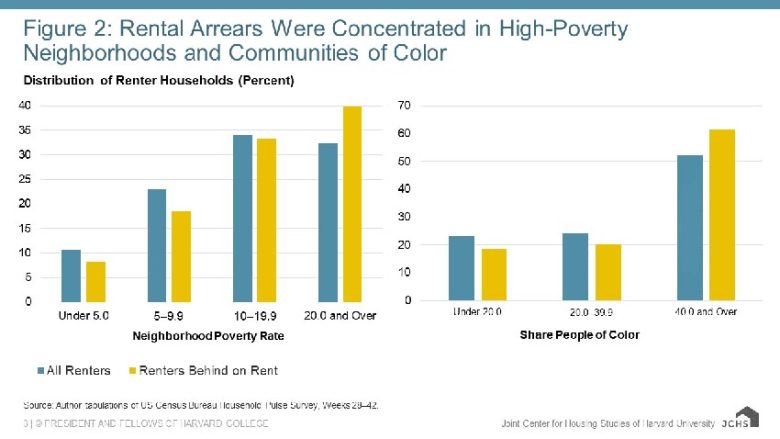By Charlene Crowell –
For the first time in more than two decades of research, every state now has renters who are nearing a financial breaking point in housing affordability.
New research independently released by Moody’s Analytics and Harvard’s Joint Center for Housing Studies (JCHS) reach the same conclusion: consumers are struggling with a growing percentage of their incomes going towards keeping a roof over their heads.
On January 19, 2023, Moody’s released its update on rental affordability, and concluded that “Rising mortgage rates caused many households to be priced out from home buying and would-be buyers to remain renters… apartment demand surged as a result and drove rates sky high. As the disparity between rent growth and income growth widens, Americans’ wallets feel financial distress as wage growth trails rent growth.”
Days later on January 25, Harvard’s JCHS went a step further by factoring race and poverty into its analysis.
 “Renters living in communities of color, and in high-poverty, lower-income, and lower-rent neighborhoods were more likely to experience financial distress… More than three-fifths of renters behind on their housing payments lived in communities of color, while about two-fifths lived in high-poverty or lower-income neighborhoods,” concluded JCHS.
“Renters living in communities of color, and in high-poverty, lower-income, and lower-rent neighborhoods were more likely to experience financial distress… More than three-fifths of renters behind on their housing payments lived in communities of color, while about two-fifths lived in high-poverty or lower-income neighborhoods,” concluded JCHS.
There was a time when a single, full-time income could financially provide for families. However, today, most families are working harder than ever and still need at least two incomes to make ends meet. According to the National Low Income Housing Coalition, in 2022, there was no county, metro area, or state where a person earning the federal or prevailing state or local minimum wage for a 40-hour workweek can afford a modest two-bedroom rental home.
Although the Census Bureau finds that the nation’s median income in 2021 was $70,784, that same figure for Black America was only $48,297. This $30K income difference was further examined by a…
Read the full article here



